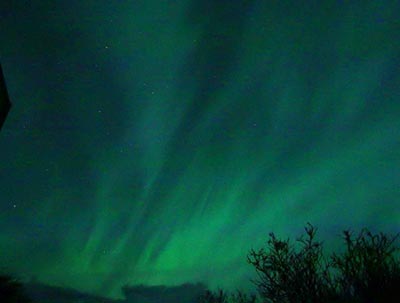|
This page is available in Gaelic ~ link here
The Aurora Borealis
The
Aurora Borealis (more commonly known as the Northern Lights) is
a natural phenomenon occurring in the dark night skies of the It is
the sky’s own gigantic light show. They are so large that they often
occupy the whole of the northern night sky. These displays are caused
by gas (oxygen and nitrogen) molecules being energised
by the bombardment of electrically charged particles thrown into
space by periodic emissions of energy from the sun. The
aurora is most easily seen at latitudes higher than 65 degrees north.
In Even
if only a few rays are seen, they will reach great heights in the
sky. Sometimes, the huge beams of light may be colourful
greens and reds of oxygen at its different heights in the atmosphere,
or perhaps the violet-blues of nitrogen, pulsating in brightness
and appearing to hang in a folding arc, like massive curtains in
the sky. Moonlight, frost haze and different seasonal changes can
affect the hues of these basic colours.
The
surest way to see them is to look outside on a dark, clear night.
Observation of the |


